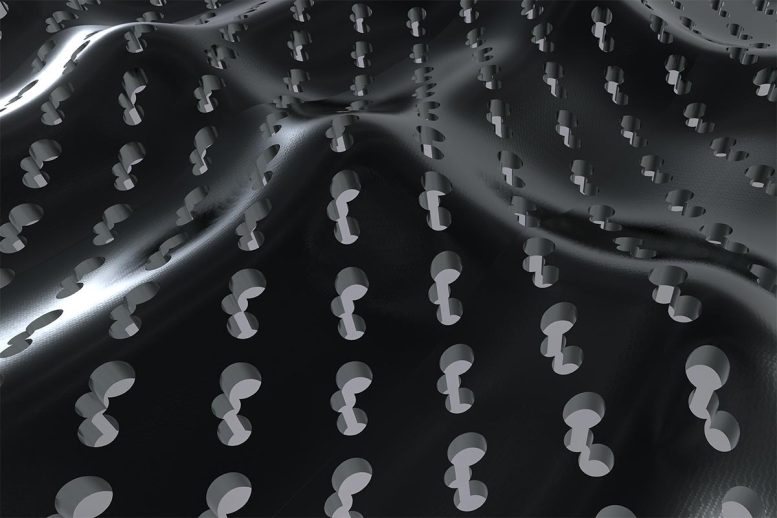
A new genetic algorithm enables precise design of phononic crystal nanostructures for improved quantum computing and communication, as confirmed by experimental validation, facilitating precise acoustic wave control. Credit: SciTechDaily.com
Researchers have developed a genetic algorithm for designing phononic crystal nanostructures, significantly advancing
Phonons, which are quantized vibrations in periodic lattices, offer new ways to improve these systems by enhancing qubit interactions and providing more reliable information conversion. Phonons also facilitate better communication within quantum computers, allowing the interconnection of them in a network.
Nanophononic materials, which are artificial nanostructures with specific phononic properties, will be essential for next-generation quantum networking and communication devices. However, designing phononic crystals with desired vibration characteristics at the nano- and micro-scales remains challenging.

Researchers at the Institute of Industrial Science, The University of Tokyo implement a genetic algorithm to automatically design phononic crystals with desired vibrational properties, which may help with future computer and communication devices. Credit: Institute of Industrial Science, The University of Tokyo
Advanced Phononic Materials
In a study published on July 3 in the journal ACS Nano, researchers from the Institute of Industrial Science, The University of Tokyo experimentally proved a new genetic algorithm for the automatic inverse design—which outputs a structure based on desired properties—of phononic crystal nanostructures that allows the control of acoustic waves in the material.
“Recent advances in SciTechDaily